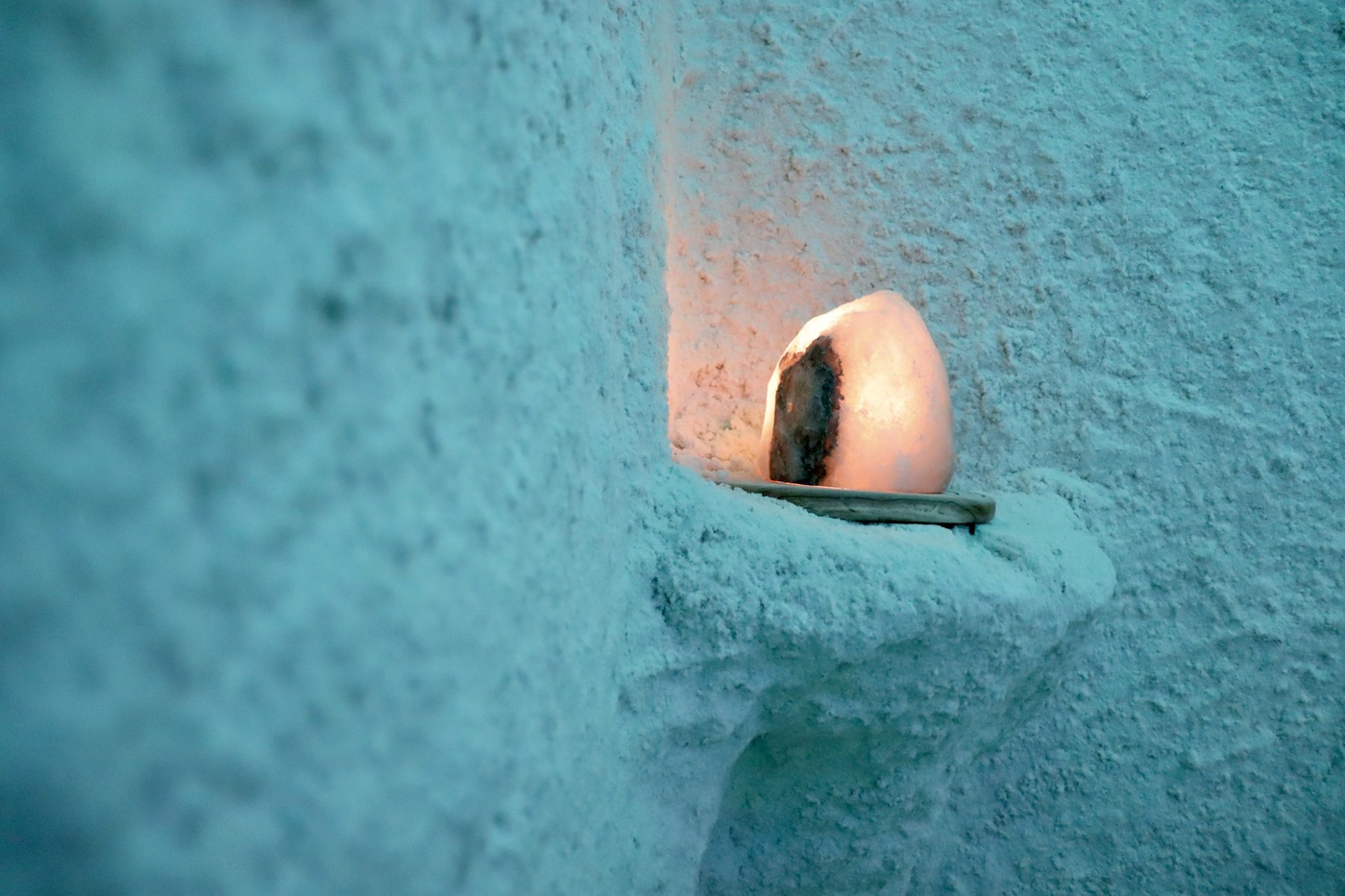Pseudoscience with a taste of salt

This year, the town of Korets in the Rivne Region opened a salt room, funded by a 350,000-hryvnia allocation from the German Red Cross [1]. Last November, a salt room was constructed on the territory of Bolhrad Hospital; it cost around 800,000 hryvnias taken from the community budget [2]. Simultaneously, a Ternopil kindergarten inaugurated its own salt room, established at a cost of 380,000 budget hryvnias [3].
These are just a few examples; in recent years, dozens of such rooms have emerged across Ukraine, in both large and small cities.

As one might expect, a salt room is coated with a lot of salt — walls, floors, and ceilings — aiming to imitate a salt cave or mine. The practice of visiting salt caves for health benefits originated in Eastern Europe. In the 19th century, Polish physician Feliks Boczkowski observed that salt mine workers seemed to experience fewer lung problems compared to workers in other mines.
Boczkowski and other doctors proposed treating patients with salt, a method now known as halotherapy in many countries (Greek: hals - salt, Greek: therapeias — treatment) or speleotherapy (speleon - cave, therapia - treatment).
But, if there are no natural caves or mines available, supporters of this treatment thought — why not create an artificial one?
Beyond utilizing several tonnes of rock salt, these rooms feature a so-called halogenerator that fills the air with ions and tiny salt particles. According to halotherapy advocates, this should help create a “therapeutic microclimate.” Amenities like sun chairs, lounge chairs, armchairs, TVs, playgrounds, and other relaxation aids are also installed for visitors.
Various websites and brochures promise an almost panacea. Below we provide just one list of indications, including:
- acute and chronic diseases of the ENT organs;
- vegetative-vascular dystonia, neuroses, hypertension;
- asthma and allergic diseases;
- sciatica, rheumatism, arthritis;
- dermatological diseases (psoriasis, acne, etc.);
- prevention of respiratory diseases;
- immunity boosting and general health improvement;
- chronic nonspecific lung diseases.
The list is impressive. Now, spas don’t have to worry about potential customers. Moreover, with such effectiveness, salt rooms should be present in every hospital worldwide.
However, such extensive lists are the first warning sign that we’re facing unproven “medicine.” Unfortunately, it’s highly improbable that a rudimentary practice can treat a vast range of diseases.
Let’s examine published research studies. A search on PubMed for the word “halotherapy” revealed only 42 articles [4]. It’s surprising that such a purported “panacea” has garnered so little research. Around 20 of the articles found were written in russian and published not in peer-reviewed international journals, but rather in russian “idiot’s guides” or “alternative medicine” journals.
The few research papers worthy of attention suffer from many limitations such as unrepresentative sampling, self-reports (when the subject’s word regarding whether they feel better is taken for granted), and lack of information about participants’ medication.
Our search continued.
In 2014, we conducted an extensive study of halotherapy for the treatment of chronic obstructive pulmonary disease (COPD). The meta-analysis included 151 articles from various sources (PubMed, MEDLINE, EMBASE, CINAHL, and Google Scholar) [5]. Among them, only one (!) randomized controlled trial mentioned halotherapy.
The American Foundation for Asthma and Allergy Research (AAFA) reports that halotherapy is classified as an unproven method of treatment [6].
“If your goal is to relieve stress, salt caves can help. It’s cool, quiet, and relaxing,” says Maureen George, a member of the American Lung Association. “But if you’re looking for a natural way to treat asthma, halotherapy is not the way to go. It hasn’t been thoroughly studied, despite the claims of some ‘experts’.”
On the AAFA website, people with asthma are advised to be cautious and avoid salt rooms, as it is unknown how the body may react. For example, inhaling salt concentrates can potentially irritate the airways.
The Cochrane organization (which studies medicine and treatment effectiveness through randomized controlled trials) states that there’s no evidence of a positive effect on asthma treatment [7]. However, these data are from 2006, but little has changed since then, except for the increasing number of salt rooms.
As for the other diseases mentioned, there are no studies investigating halotherapy’s effects. Probably, it all stems from the very concept of salt treatment. It’s obvious to many scientists and doctors that this method lacks even a hint of a possible effect. If it did exist, independent research teams would have documented it.
As can be seen, halotherapy rests on a very shaky evidentiary base. Unfortunately, salt rooms are proliferating across Ukraine. One could speculate that in such an unusual room, it’s quite possible to relax for an hour or so, and perhaps the air is cleaner than outside. But are these positive aspects truly worth hundreds of thousands of hryvnias? Hardly - especially when there’s demand in the country for rehabilitation centres with proven treatment methods. Not to mention the false promises made on halotherapy websites and advertising brochures. It would be regrettable if patients neglected effective treatments in favour of illusory ones, losing precious time and money ![]()
Prepared by Dmytro Filipchuk.
Sources:
- https://redcross.org.ua/news/2024/01/62443/
- http://surl.li/qisrg
- http://surl.li/mtwlf
- https://pubmed.ncbi.nlm.nih.gov/?term=halotherapy
- https://www.ncbi.nlm.nih.gov/pmc/articles/PMC3937102/
- https://community.aafa.org/.../aafa-explains-is-therapy...
7. https://www.cochranelibrary.com/.../14651858.CD001741/full






